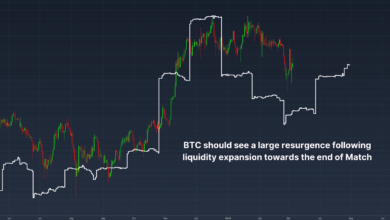
How the First Bitcoins Were Created: Secrets of the Genesis Block
First Bitcoins Were Created: The story of Bitcoin’s origin is as intriguing as the revolutionary technology itself. At the heart of this story lies the Genesis Block, the very first block of Bitcoin ever mined. It’s a moment steeped in mystery and symbolism, marking the birth of a decentralized financial system. Let’s delve into how Big Increase in Bitcoin Prices: Investors Return to the Market the first Bitcoins were created and uncover the secrets of the Genesis Block.
What is the Genesis Block?
The Genesis Block, also known as Block 0, is the foundation of the Bitcoin blockchain. It was mined by Bitcoin’s enigmatic creator, Satoshi Nakamoto, on January 3, 2009. This block is unique because it was hardcoded into the Bitcoin software and serves as the starting point for the entire blockchain network.
Unlike other blocks in the blockchain, the Genesis Block does not reference a previous block, as it is the first. Its hash is permanently fixed, making it a cornerstone of Bitcoin’s architecture.
How Was the Genesis Block Created?
Satoshi Nakamoto mined the Genesis Block using the Bitcoin software he developed. Mining involves solving a complex cryptographic puzzle to validate transactions and add them to the blockchain. The Genesis Block contained a reward of 50 Bitcoins, which were unspendable due to the way the block was programmed. This was likely intentional, symbolizing that the first Bitcoins were meant as a proof of concept rather than for immediate use.
The process of mining the Genesis Block was relatively simple compared to today’s standards. Back then, Bitcoin’s network was in its infancy, with minimal computational power required to mine blocks. This simplicity underscored the experimental nature of Bitcoin at its inception.
The Hidden Message in the Genesis Block
One of the most fascinating aspects of the Genesis Block is the message embedded in its coinbase parameter. It reads:
“The Times 03/Jan/2009 Chancellor on the brink of the second bailout for banks.”
This was a headline from The Times newspaper on the day the Genesis Block was created. The message serves as a timestamp, proving that the block was mined no earlier than that date. However, it’s also widely interpreted as a critique of the traditional banking system and a statement of intent for Bitcoin as an alternative.
Symbolism and Legacy

The Genesis Block is more than just a technical milestone; it’s a symbolic moment in the history of finance. By embedding a reference to the financial crisis, Satoshi Nakamoto highlighted the vulnerabilities of centralized banking systems and introduced Bitcoin as a decentralized solution.
The unspendable nature of the 50 Bitcoins in the Genesis Block adds to its mystique. These coins are often seen as a monument to Bitcoin’s beginnings, untouched and immovable, much like the principles of the blockchain itself.
The Impact of the Genesis Block
The Genesis Block set the stage for a financial revolution. It marked the birth of blockchain technology, which has since expanded far beyond cryptocurrency. From smart contracts to decentralized finance (DeFi), the principles established by the Genesis Block continue to influence innovation.
Moreover, the Genesis Block serves as a reminder of Bitcoin’s mission to create a transparent, secure, and decentralized financial system. Its legacy inspires developers, entrepreneurs, and enthusiasts to push the boundaries of what’s possible with blockchain technology.
Conclusion
The creation of the first Bitcoins and the mining of the Genesis Block were pivotal moments in the history of technology and finance. The secrets embedded in the Genesis Block—from its unspendable reward to its hidden message—reflect the vision and values that underpin Bitcoin. As we look back on this historic milestone, the Genesis Block reminds us of the transformative power of innovation and the enduring quest for financial freedom.
[sp_easyaccordion id=”5578″]







